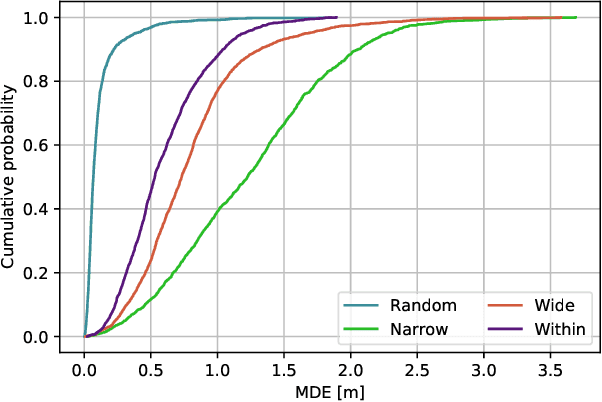Marko Meža
Towards Sustainable Deep Learning for Wireless Fingerprinting Localization
Jan 22, 2022



Abstract:Location based services, already popular with end users, are now inevitably becoming part of new wireless infrastructures and emerging business processes. The increasingly popular Deep Learning (DL) artificial intelligence methods perform very well in wireless fingerprinting localization based on extensive indoor radio measurement data. However, with the increasing complexity these methods become computationally very intensive and energy hungry, both for their training and subsequent operation. Considering only mobile users, estimated to exceed 7.4billion by the end of 2025, and assuming that the networks serving these users will need to perform only one localization per user per hour on average, the machine learning models used for the calculation would need to perform 65*10^12 predictions per year. Add to this equation tens of billions of other connected devices and applications that rely heavily on more frequent location updates, and it becomes apparent that localization will contribute significantly to carbon emissions unless more energy-efficient models are developed and used. This motivated our work on a new DL-based architecture for indoor localization that is more energy efficient compared to related state-of-the-art approaches while showing only marginal performance degradation. A detailed performance evaluation shows that the proposed model producesonly 58 % of the carbon footprint while maintaining 98.7 % of the overall performance compared to state of the art model external to our group. Additionally, we elaborate on a methodology to calculate the complexity of the DL model and thus the CO2 footprint during its training and operation.
 Add to Chrome
Add to Chrome Add to Firefox
Add to Firefox Add to Edge
Add to Edge